Planning a kitchen remodel or renovation is a big step. Along with thinking about what material to use for new counters and cabinet colors, it’s a good time to consider what technology you want in your kitchen, too. A renovation is the perfect time to build a smart kitchen with all the connected technology that you’ve been wanting. Interested? Here’s what to consider and why.
Think about what you cook in the kitchen
Smart technology works best when it’s applied to something that you’re already doing every day. Before you start looking at appliances (and they all don’t have to be from the same brand), think about how you use your kitchen. What sort of meals do you cook most often? Do you use the stovetop the most, or the oven for baking, or the microwave? Are you more of a slow cooker chef? Considering these things now will help you make the right decisions later. Once you know what you use the most, use that information to inform your budget and how you’ll spend it. Then, we can move on to the fun stuff!
Choose a smart home platform you like
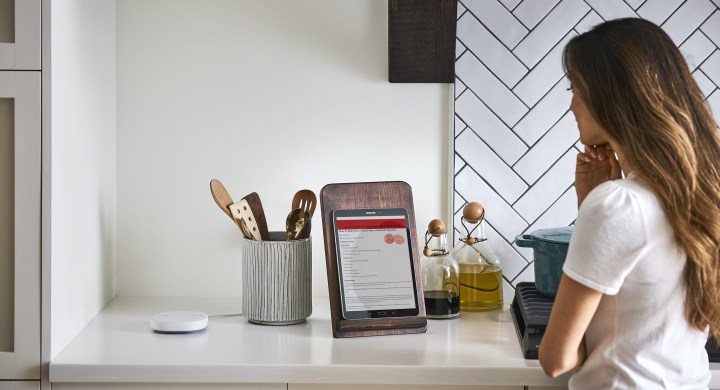
You may also want to take a look at the apps offered by major kitchen brands like LG, Samsung, and others to see if there’s a particular app design or compatibility feature you want. For example, you may want to make sure that your appliances work with a certain voice assistant like Alexa. We also suggest getting appliances that are sure to work with the new universal smart home protocol Matter, which makes it easier to control them with an app of your choice.
Shop for a connected smart oven
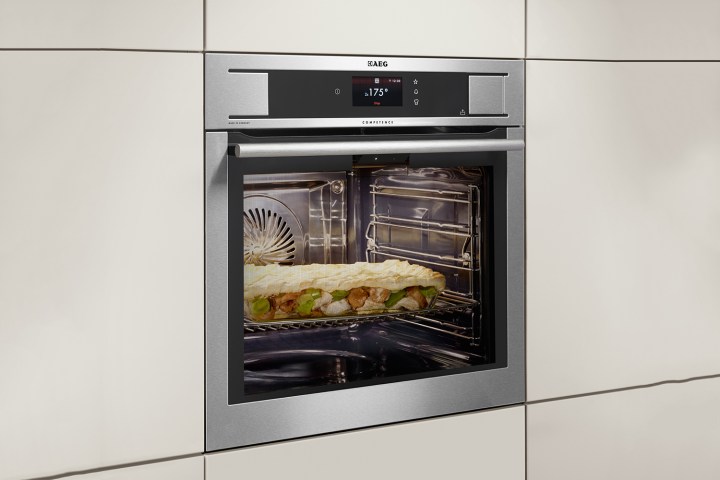
There are lots of appliances you could start with, but smart ovens (and their associated stovetops) provide some of the best app-friendly features that you’ll be using repeatedly. This includes the ability to remotely monitor and set temperatures, get alerts about timers or temperature, and other important notifications. Some smart ovens even come with built-in meat probes that can send you updates about when larger meat dishes have reached the right temperature or give you cooking instructions for an unfamiliar dish. We have guides to stovetops and ovens with some great recommendations for smart versions.
Add a smart fridge
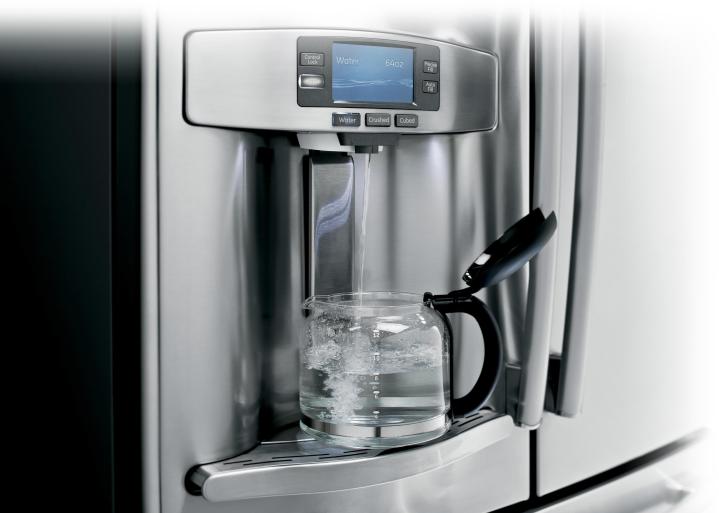
If you peruse our list of the top refrigerators, you’ll notice that they have a wide range of smart features. Models like Samsung’s Family Hub include a variety of sensors and a dedicated smart screen for communication with others, making lists and reminders, and a lot more. It’s expensive, but you can use your fridge as an alternative smart device for kitchen management. Other models skip the screen but have interesting features like the ability to scan the inside of your fridge and plan a grocery list without ever opening it. Some refrigerators keep the tech to a minimum, with things like alerts if you leave the fridge door open or informing you it’s time to change the water filter needs to be changed. You can choose just about any level of smart technology that you want, but we suggest that simple is better for the fridge, which doesn’t benefit as much from tons of added smart technology. When it comes to storing food, what you really want is one that supports different climate controls which will help food last longer. Read our fridge buying guide for more tips.
Find a smart microwave or toaster oven
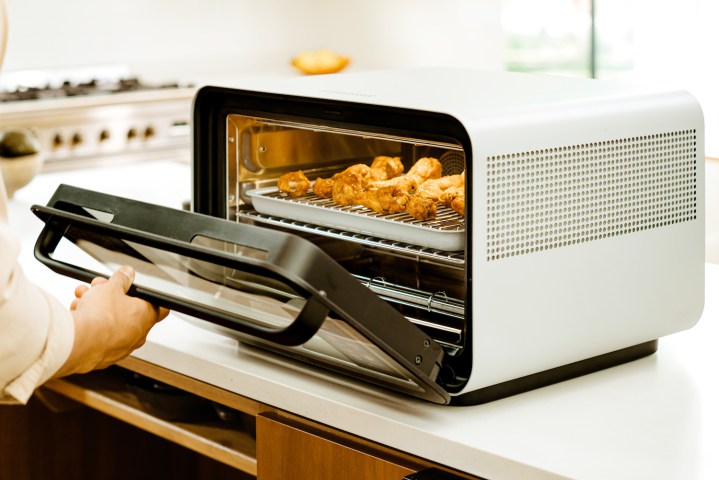
Panasonic, Samsung, Toshiba, and other companies make a variety of smart microwaves that work with voice assistants and app controls. You can choose your cooking mode or preset from your phone, turn off beeps if you prefer silence (a feature long overlooked in older microwaves), and even do things like monitor internal humidity.
If you don’t use a microwave that much, or don’t have an oven, think about getting a smart toaster oven. These small appliances have a broader range of cooking and warming options thanks to their convection cooking design, and their smart capabilities are similar. High-end models like Joule Oven Air Fryer Pro can do everything from air fry to broil to proof to cook pizza. They can also sense what sort of foods you are putting inside and use an app to manage the cooking, as well as give you recipes and recommendations via app.
Buy an Instant Pot or similar smart cooker
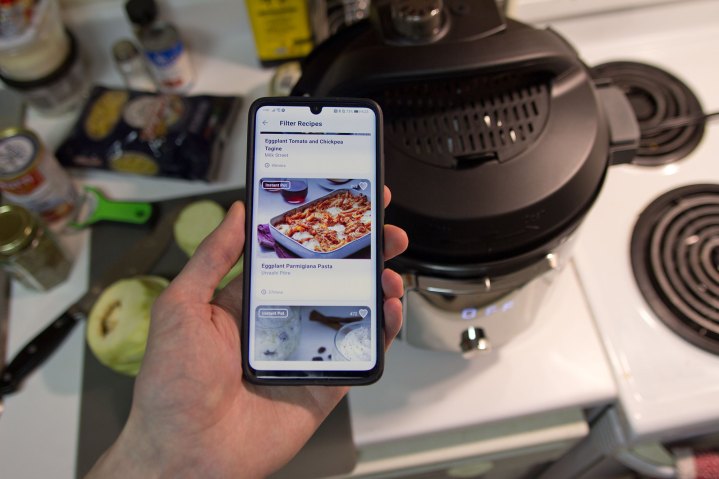
Instant Pots are all-in-one devices that can perform the following tasks: slow cook, pressure cook, make rice or yogurt, saute foods during prep, and much more. If you make a lot of one-pot meals in your kitchen, or tend to have lots of rice with your meals, etc., think about adding a compact Instant Pot as part of your remodel plans. They can fit anywhere on your counter, and the more advanced versions come packed with smart tech that allows you to get app controls and alerts no matter what your planning on cooking. Plus, Instant Pots and related cookers tend to be much more affordable than smart toaster ovens or microwaves, even when packed with smart technology. Read out Instant Pot guide to learn about the different models to find one that’s right for you.
Pick out a smart speaker or display
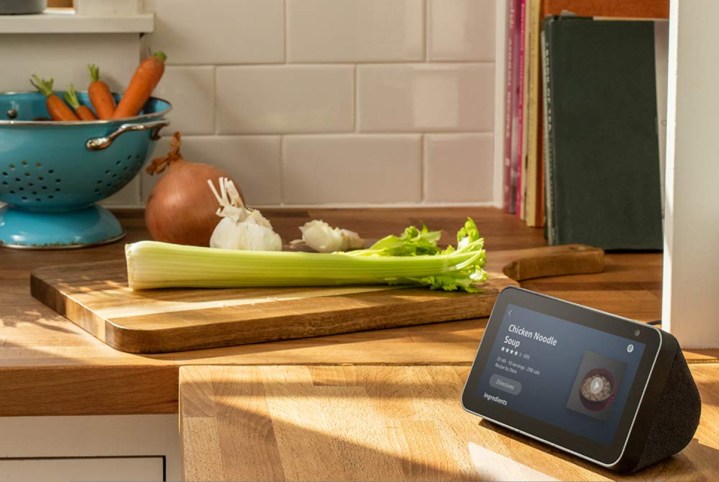
Tie everything together by picking a voice assistant speaker that’s compatible with your smart devices. Google Assistant uses models like the Nest Audio, Alexa has Amazon Echo, and Siri is available on the HomePod Mini. They can play music from your favorite services, answer questions, help you manage your calendar, and take voice calls from friends, among many other tricks. They’re also very handy in the kitchen, where you can use them to set timers, ask for recipe conversions, and ask questions about certain ingredients.
An alternative is a smart display, like the Echo Show 15 or the Nest Hub Max. These models sport a touchscreen that you can use to identify ingredients, stream cooking videos, follow a blog recipe you found, and lots more.
Start looking at smaller devices

With larger appliances connected to your smart home, you can add additional kitchen accessories as you see fit. You may want a smart meat thermometer for big roasts, for example. Or, if you’re into sous vide cooking, a smart sous vide device has incredible quality of life improvements over older methods. The same is true of smart coffee makers that can work with voice assistants or smart lighting for your kitchen alcoves. The sky is the limit when it comes to what you feel like adding!
Finally, keep in mind that a big kitchen remodel with lots of new smart technology will also put a strain on your WiFi router. It helps to have a more advanced router with solid range and dual-band support, so you can offload some of your smart devices to a different band — otherwise, slowdowns can occur.



